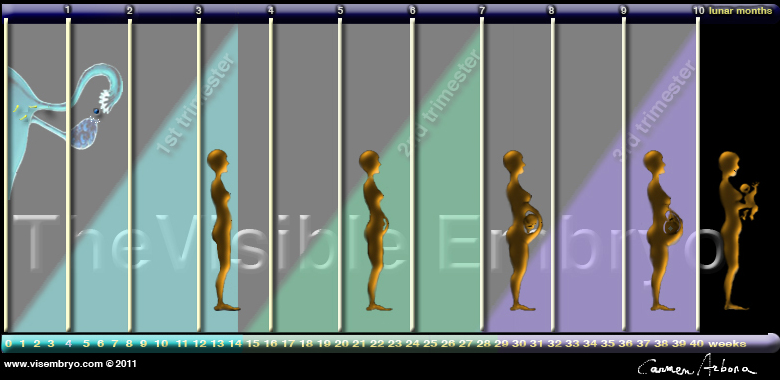|

Click weeks 0 - 40 and follow fetal growth
|
|||||||||||||||||||||||||||||||||||||||||
|
|
||||||||||||||||||||||||||||||||||||||||||
|
Expectant Fathers Need Prenatal Care and Support Found: New Gene That Causes Intellectual Disability May 12, 2011--------News Archive Cryopreserved Umbilical Cord Blood Same As Fresh High Pregnancy BPA Results In Infant Abnormalities May 11, 2011--------News Archive 15 Eggs Perfect Number To Achieve Birth After IVF Depression Treated Well In Moms Benefits Her Kids May 10, 2011--------News Archive Scientists Reveal Nerve Cells' Navigation System Stem Cell Technology Used In Unique Surgery May 9, 2011--------News Archive Mayo Clinic Turns Zebrafish Genes Off and On Autism in South Korea Estimated at 1 in 38 Children
|
Health services should incorporate counseling and assessments for men and women to reduce stressors and promote positive pregnancy outcomes, says ManSoo Yu, assistant professor in MU’s Public Health Program. Mental distress in pregnant women – caused by anxiety, lack of social support or low self-esteem – is associated with poor infant health. The importance of psychological and social factors in women is well documented, but few studies have examined these factors in men. Men play an important role in supporting and caring for pregnant women, Yu said. “Too often, men are treated as observers of the pregnancy process,” said Yu, assistant professor in the College of Human Environmental Sciences. “Acknowledging and addressing the emotional well-being of men as well as women is recommended. Providing prenatal care for expectant fathers can encourage men to have a proactive role in pregnancy, which will allow for better maternal and infant health outcomes.” Yu found that men process pregnancy-related issues, including family problems, preparing for change and feeling overwhelmed, as financial stressors, whereas women consider them emotional stressors. Men and women also perceive support from their partners differently. In the study, men received more emotional support from their partners, and women received tangible support, through actions such as help with tasks or care. It’s possible that women give more emotional support because they feel it is important while men give tangible support because they believe it is important. “Understanding these differences will help practitioners provide better advice and services for expectant parents,” Yu said. “For example, men could write budgets to alleviate financial stress and women can seek counseling to understand emotional stressors. Men and women can discuss and learn about potential stressors to become better partners and improve the health of each other and their infant.” To better understand men and women’s emotions during pregnancy, the Prenatal Psychosocial Profile (PPP) was given to 132 expectant mothers and fathers. The PPP is a standard assessment, typically given only to expectant mothers to measure stress, support of their partner and self-esteem. Another finding was that women had higher self esteem than men during pregnancy. Self-esteem is an important dimension especially during pregnancy, because lower self-esteem is related to substance use. In particular, finding ways to minimize men’s self-criticism about their abilities may be important because, in the study, substance abuse was associated with emotional stress among men. The research was published in a recent issue of the Journal of Advanced Nursing. For more information, visit http://onlinelibrary.wiley.com/doi/10.1111/j.1365-2648.2011.05628.x/full Original article: http://munews.missouri.edu/news-releases/2011/0512-expectant-fathers-should-receive-prenatal-care-support-mu-study-finds/
| |||||||||||||||||||||||||||||||||||||||||